Russia has a lot of practical experience in building fences and creating queues. One of its most famous fences is the fallen Berlin Wall. Large queues in the former Socialist Bloc are not less famous around the world and citizens of these countries did spend enough time in them to become fed up with such “service”.
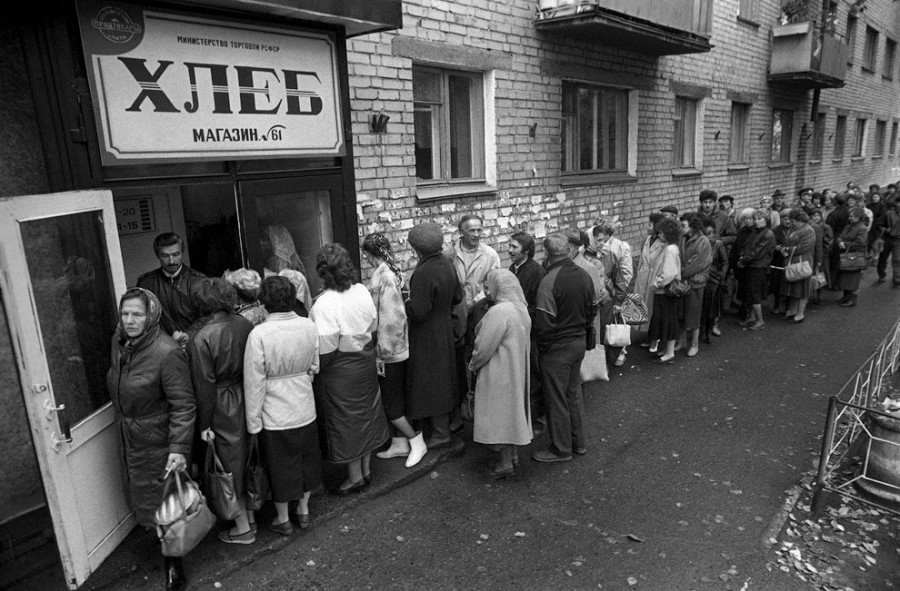
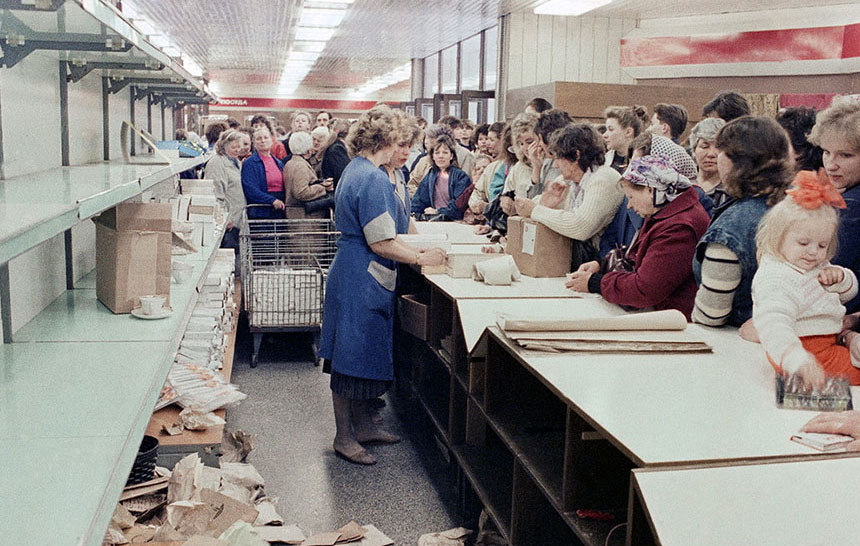
It, therefore, would be logical that after the collapse of communism and the dissolution of the Soviet Union Russia would become a leader in “humanization” of public spaces — poorly designed Soviet cities had to be radically improved. But Russia has gone the other way and the cities turned into prisons where every piece of land is surrounded by a fence — either small or big.
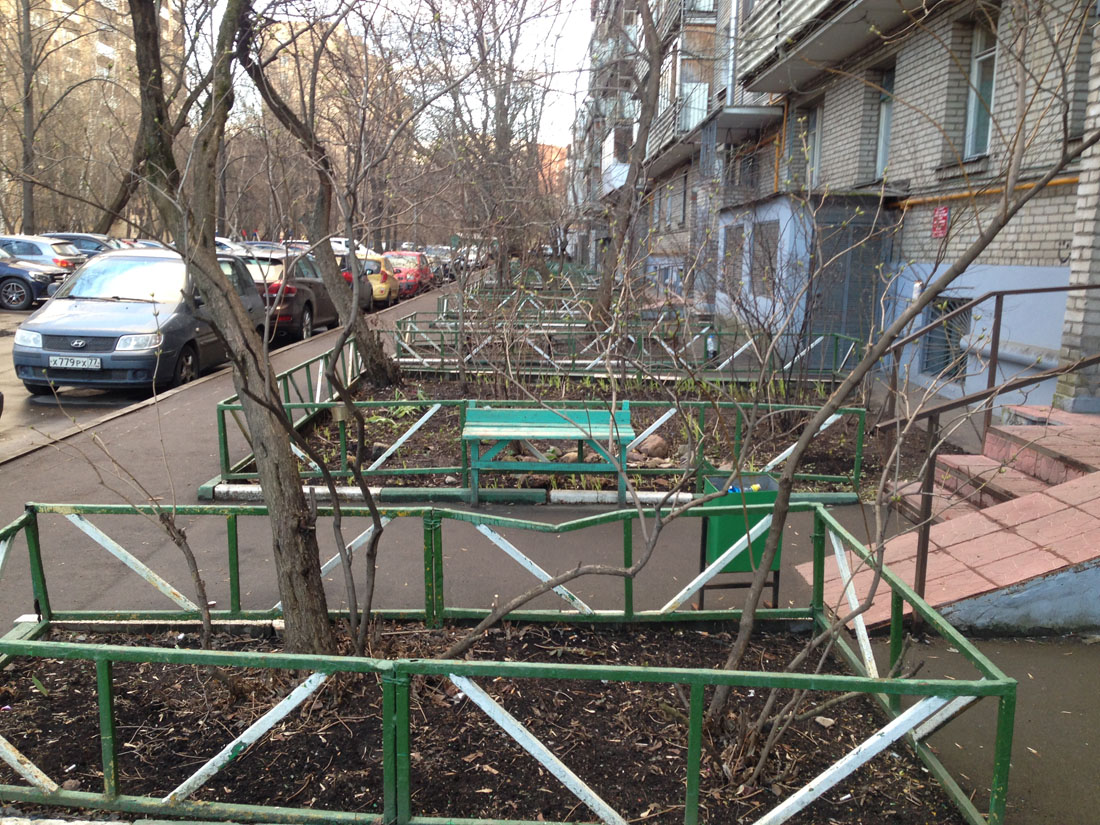
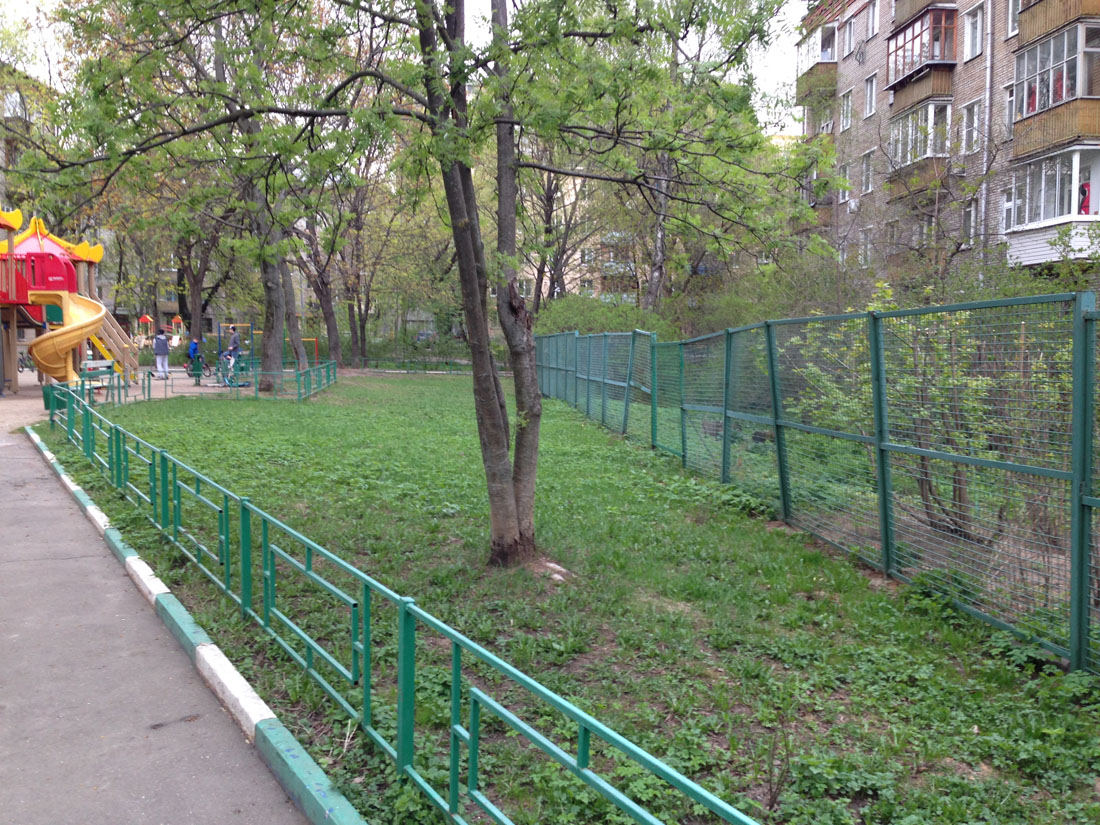
In my home Aeroport district in Moscow, the situation is simply unbearable — wherever the pedestrian looks there is always a fence on the right or left.
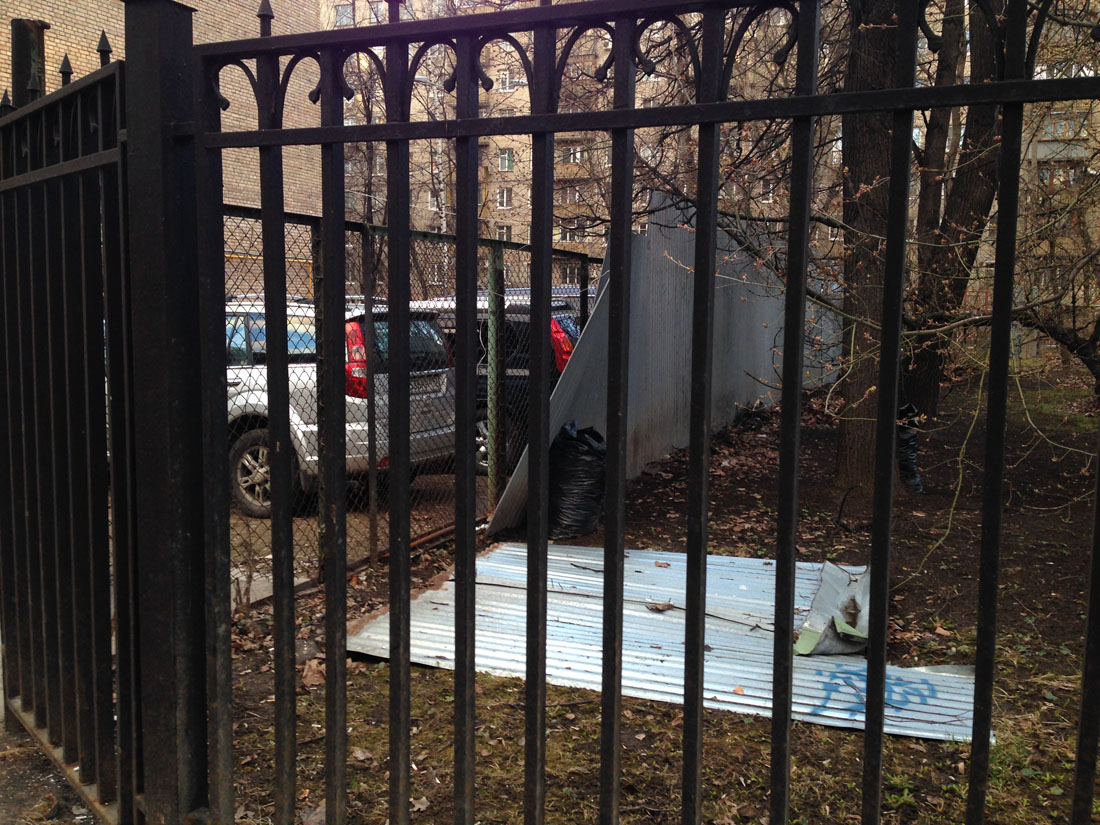
Just keep in mind that you are a criminal (and a danger) and the surroundings should be protected from you. Actually, this logic makes life in Russia easier.
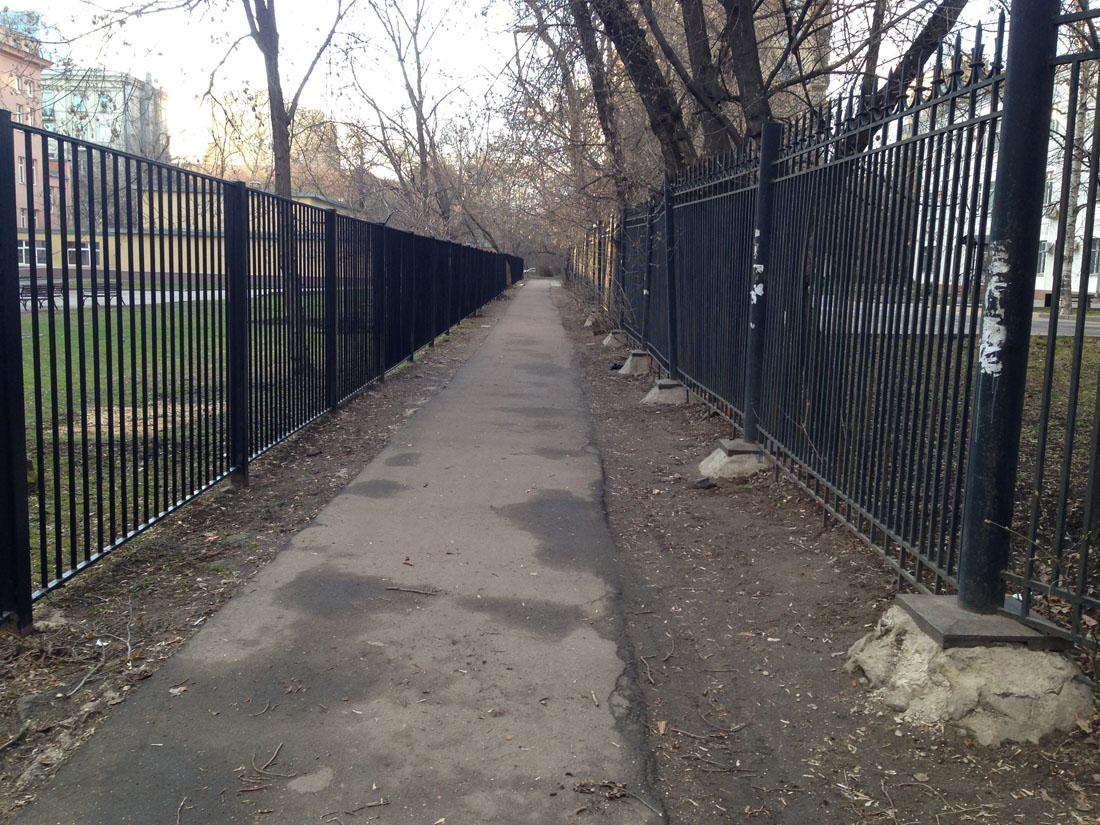
But let’s skip the fences — after all, let the people experience the joy of owning something after living in the communist utopia. How are things going with the second problem — queues? Russia has certainly become a leader in some kind of crowd management or queue management (this is definitely taught in European business school while studying the “Operations Management” subject).
So did it become a leader in this field? Nope. In everyday life one will certainly get in a queue somewhere — in a hospital, bank, shop and so on. Some companies have adequate waiting conditions in their shops or buildings but overall a feeling prevails that the state, business, and customers don’t care at all.
It feels like people have absorbed the Soviet experience at the genetic level and in any situation they instinctively and instantly try to organize themselves in a queue. No longer than half a year will pass and we’ll get another news article regarding another kilometer-long queue at an exhibition of some famous artist in the Russian Museum, the Pushkin Museum or the Tretyakov Gallery. People stand in a queue at an aquarium, café, shop and the ferry to Crimea. Some get too tired of waiting and become heroes of another “Russian video” on YouTube.
People wait in queues in the summer…

… and in the winter.
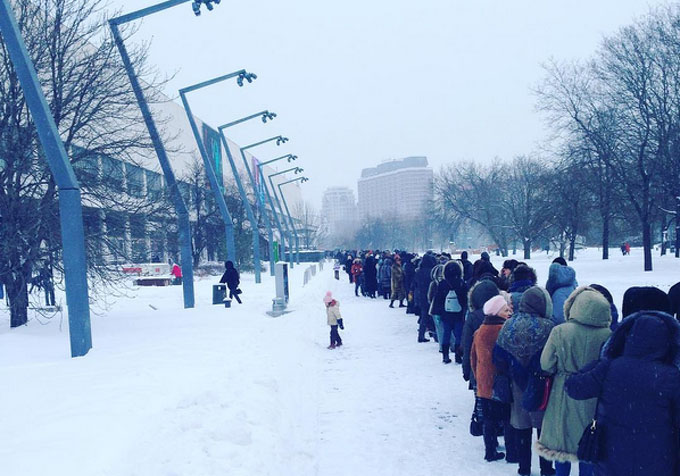
And the queue lasts hours. Some even share tips: “We knew from experience that we need to come early to get inside and wait in a queue for at least 3 hours and not 5–6. We’ve prepared: we’re dressed warmly and we talk with each other to pass time.” Indeed, a reasonable lifehack — arrive early in the morning to stand only three hours in the queue and not five or six.
There’s also room for a simple misunderstanding — during the Serov exhibition in the Tretyakov Gallery buyers of online tickets broke down the door thinking that they don’t have to stand in the queue.
And these people are “intelligentsia” that goes to a museum to see some paintings. What shall we expect from the religious people who want to “TOUCH the Lord” or “the eternity”? Nothing special — once again a kilometer-long queue that lasts for twenty hours. Almost a day!
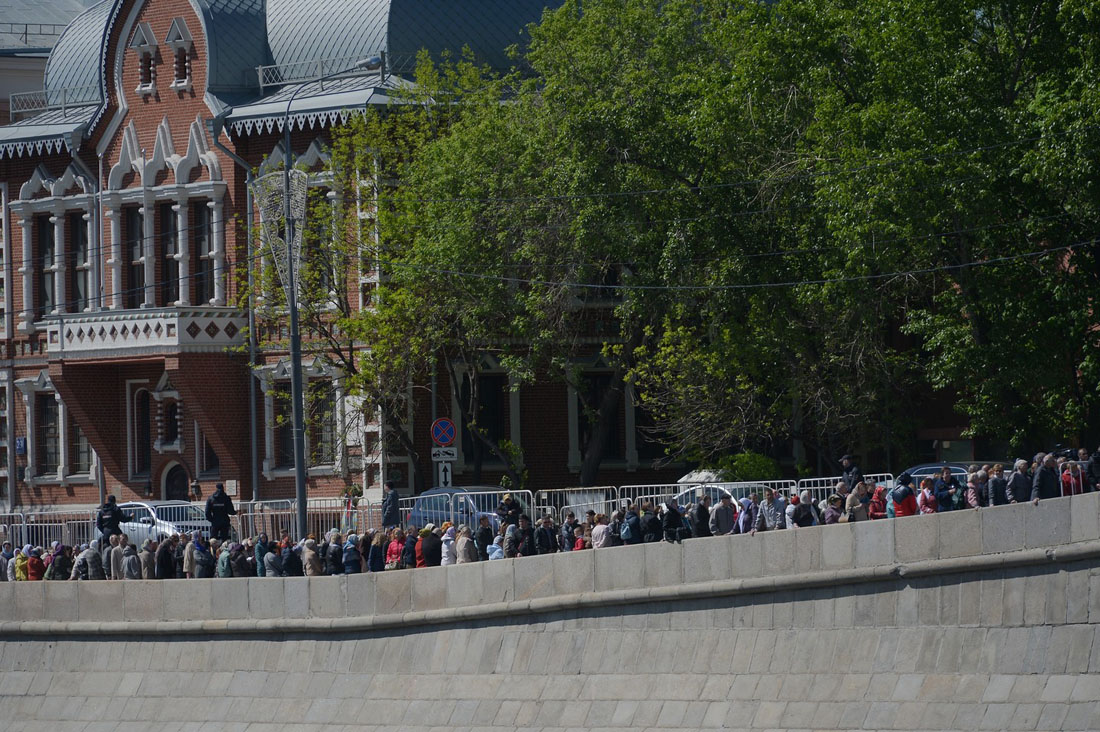
Fences and queues
The bringing of the relics of the Saint Nicholas to Moscow encouraged me to write about queues. They relics will stay in the capital from 21 May to 12 July and in the first three days, 48 thousand worshippers have bowed to them. Of course, the queue is a couple kilometers long.
What’s interesting is that this behavior was to be expected. In 2011 the Cincture of the Theotokos was brought to the capital and people stood for more than a day in the queue. In 39 days the Cincture was seen by over three million people!
Doesn’t matter how this event seems funny for non-believers but pilgrims are ready to stand in line for a whole day even at the cost of their health and life: in Stavropol, Kaliningrad and Kazan women died in the queue to the Cincture! And these are only a couple of examples.
Of course, it is weird to see kilometer-long queues in Moscow — the capital of the atheistic Soviet Union. In the end, one could be a believer with no problems in a village in Belarus or Ukraine — on the outskirts of the Soviet Union, but not in the capital of the most “progressive” country on earth. This pendulum movement of the values of the Russians once again proves that communism was equal to religion and after the collapse of the USSR citizens urgently needed to fill the “void” with something and this became the Orthodoxy.
But let’s leave that though for further materials and get back to the queues. Let’s face it — it is humiliating to stand in a line. It is a waste of time, it’s not great for our health and it is simply unworthy of a human living in our century. Kilometer-long queues only symbolize the attitude of the organizers towards those who stand in the lines created by them — complete indifference.
Let’s assume that in 2011 the organizers didn’t expect such hype and everything that happened back then was a usual incompetence but without malice. However, there was also another relic called the “Gift of the Magi” that was brought in 2014 and, once again — a large queue in the center of the city.

The queue to the “Gift of the Magi” relic three years ago
It’s the third major event and everything is the same. People are again standing in a huge queue in the center of Moscow, the traffic in these areas is limited and a lot of police is present to maintain order and organize the queue. Six years have passed and there are no improvements.
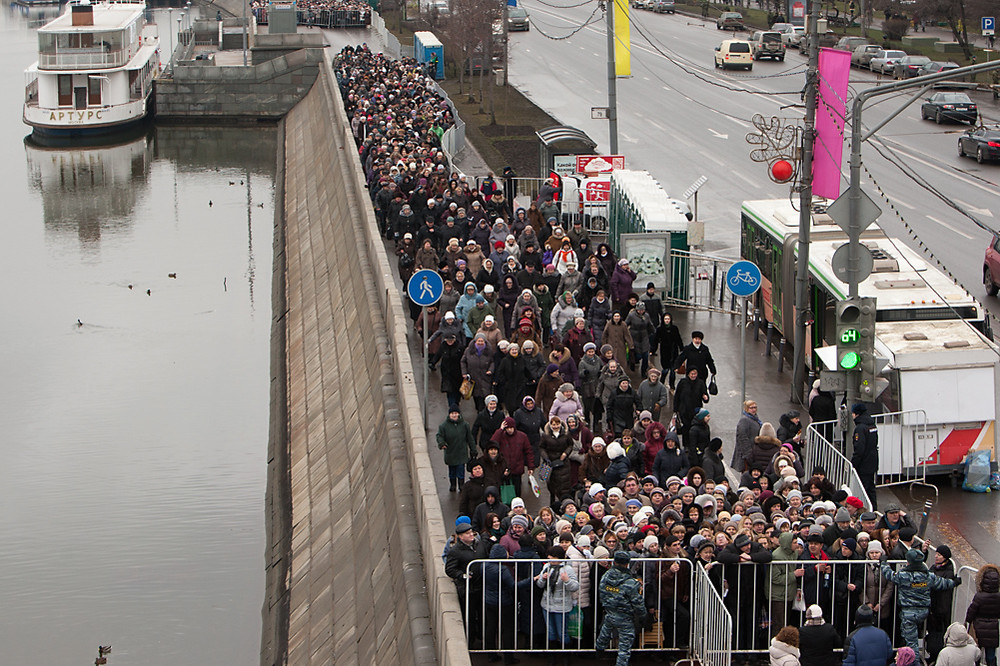
2014
This year the queue to the relics varies between Park Kultury metro station (“Queue A–B” on the image below) and Frunzenskaya (“Queue A–C”). As the organizers note: “In case the queue will become longer the entrance to it will shift in the direction of the Luzhniki Stadium and it, therefore, will be necessary to go to the metro station “Vorobyovy Gory” [“Queue A–D”].”

The “short”, “medium” and “long” queues to the Cathedral of Christ the Savior in Moscow
I, of course, understand that the believers don’t care — the more they will stand in the queue (a week, a month) the more that will be “counted in heaven” and it is definitely an achievement for them. But Russia is a secular country (at least they say so) and therefore such crowds shouldn’t be created.
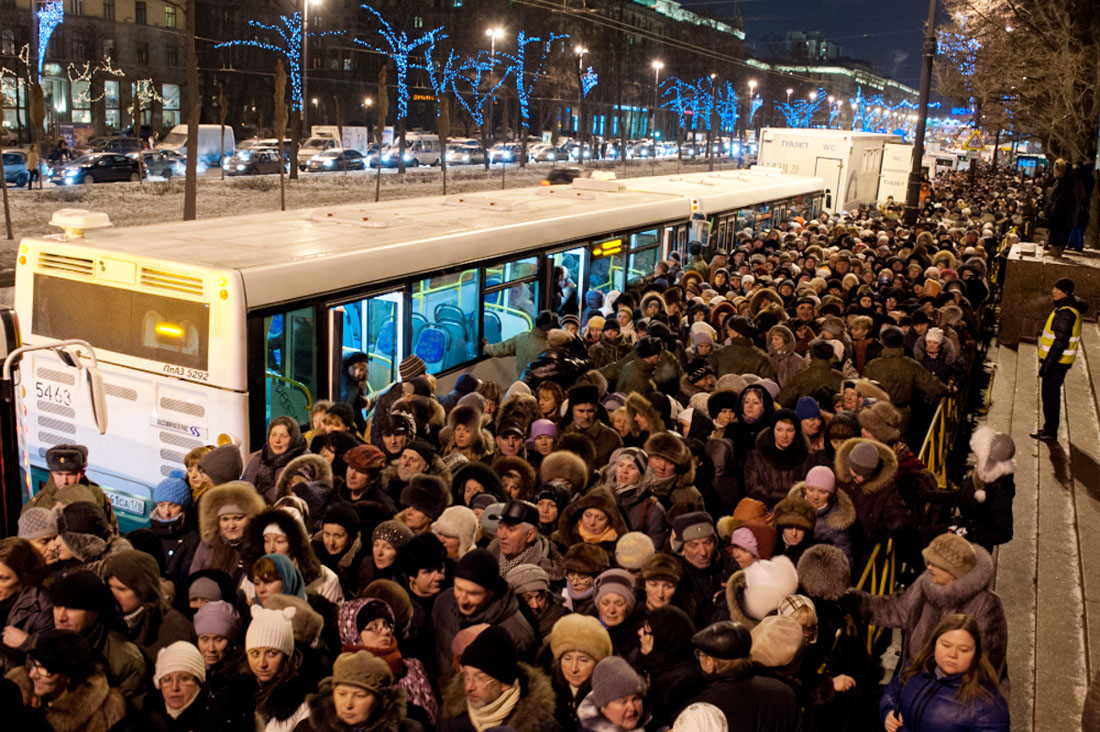
2014
At least for security reasons and in order not to disturb the pedestrians and the traffic. These two reasons are enough to forbid any political rally in Russia — why a queue of pilgrims is different?
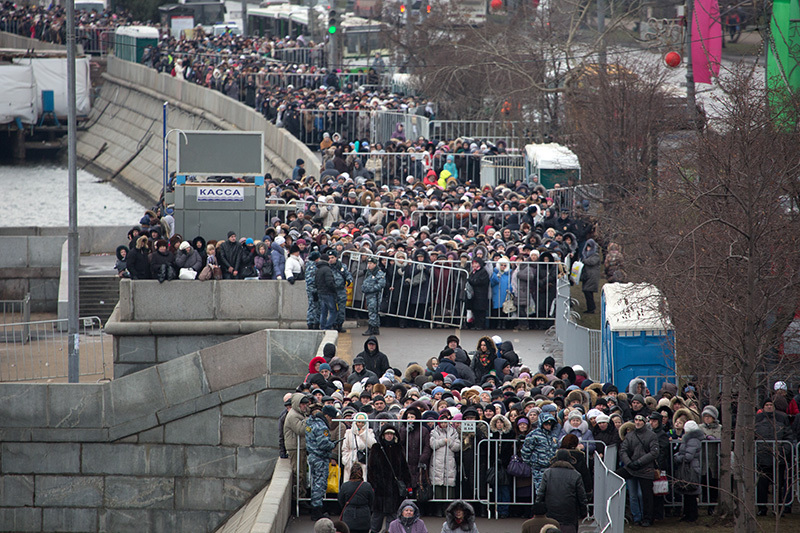
2014
And if we’re talking about safety — two thousand policemen will guard the pilgrims for nearly two months and thus will be distracted from doing real work in the city.
But it’s not the safety, traffic issues or even the economic losses that are the main problems in this situation. What’s most important is the dignity of the people who are in the queue.
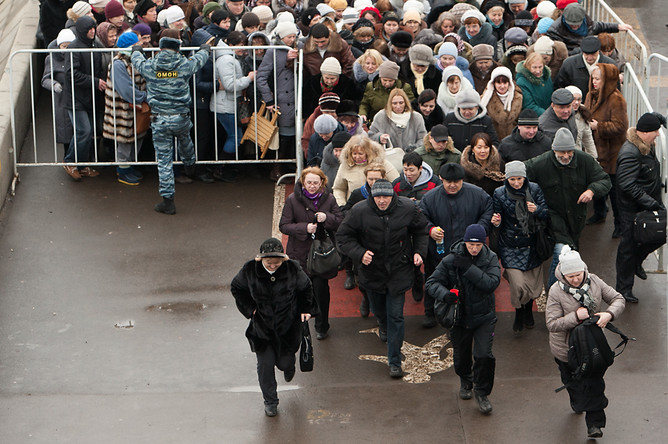
2014
They stand in the line to take a peek at their relic. In contrast to the vigil the purpose of which is to stand it the whole night, in this case, the goal is to see the relic and the queue is just an obstacle. How is it possible to remove this obstacle or at least minimize its harm?
For a start, let’s calculate how much time one person will be in contact with the relic. Using the information regarding the working hours of the “exposition”, we see that the relic will be in Moscow for 657 hours or 39,420 minutes and it is forecasted that it will be visited by more than a million people. So it means every pilgrim gets 2.4 seconds! Let’s now try to organize the exposition of the relic in an adequate way.
As I see it (from my couch, of course), the organizers could have created a modern website along with the required infrastructure (the church certainly can afford something better than this nonsense from the nineties) so that people could book a visit to the Cathedral of Christ the Savior. Of course, the website should have been launched three or even better — six months in advance.
The easiest way to book a visit to the Cathedral would be booking time. Since we don’t have much time we can arrange a registration for a specific minute — with such a large flow of believers 25–26 people would visit the relic in a minute! The relic would be seen by 1,522 people per hour and nearly twenty thousand people (19,878) would see it in a day.
But booking a certain minute would require too much punctuality and therefore it is better to book a certain interval of time. For example: “between 13:00 and 13:15”. In 15 minutes the relic will be visited by 381 people.
During the booking, one would need to fill in his name and surname and get a registration number on his email. The organizers are now left with checking the documents of the visitor and (if necessary, which I doubt) to conduct a search for weapons. Since we know that post-Soviet people love to queue it is, therefore, necessary to advise them when to come to the check-in. So, for example, if we have an interval “13:00 to 13:15” then it means that it is necessary to arrive between 12:55 and 13:00. Five minutes will be enough for the pilgrim to find the right entrance (plus quite probably a significant number of people will come 10–15 minutes earlier anyway).
We’ll also need to organize the crowd. While the old crowd will be checked the new one will arrive. It would be better to visually organize the space and create 5–10 numbered gates painted in some color. After the registration the person will know that “my interval is 13:00 to 13:15, green gates, take a passport and arrive five-ten minutes earlier”.
Different gates will discourage the creation of a large queue — with ten entrances there will be 30–80 people standing by each gate and this crowd will dissipate very quickly. Let’s not forget to add some receptionists as well as to print lists or put a couple of laptops to check the registration codes and the names of the visitors.
In any case, there is no need to create a kilometer-long queue when you can spread the flow of people on all days of the “exhibition” and the people could pick their time and date to visit the relic. With a reduction in the waiting time, there will be fewer scandals, incidents and stressful situations. Ideally, 381 people should be checked in fifteen minutes (from 12:55 to 13:10) and then the checkers should advance to the next group. The main thing is to clearly explain to the pilgrims where do they need to go and when.
If a person has 2.4 seconds to see the relic, then it is necessary to design the visit so that one could book an interval and come to the Cathedral on the registered day. If the organizers could reduce the waiting time to at least 30 minutes then it would be a huge improvement. It is desirable, of course, 15 minutes and best of all 5–10.
If you address this issue professionally and put human comfort above everything else then it’s possible to implement this. Moscow has a large subway system which probably handles the passenger flows and so it is possible to consult with the specialists. The only thing required — a desire to improve the situation for the people.
If the Russian Orthodox Church doesn’t care about its visitors then it doesn’t mean that the city should suffer for two months and provide two thousand policemen to guard the crowd and the area. In contrast to an event (e. g. a bike ride on the Garden Ring in Moscow) or a rally, when a crowd of people is the goal and the city restricts the movement of traffic and guards the participants, in this relic example the aim is to visit the relic and the queue is an indicator that the hosts can’t organize the “showroom” properly.
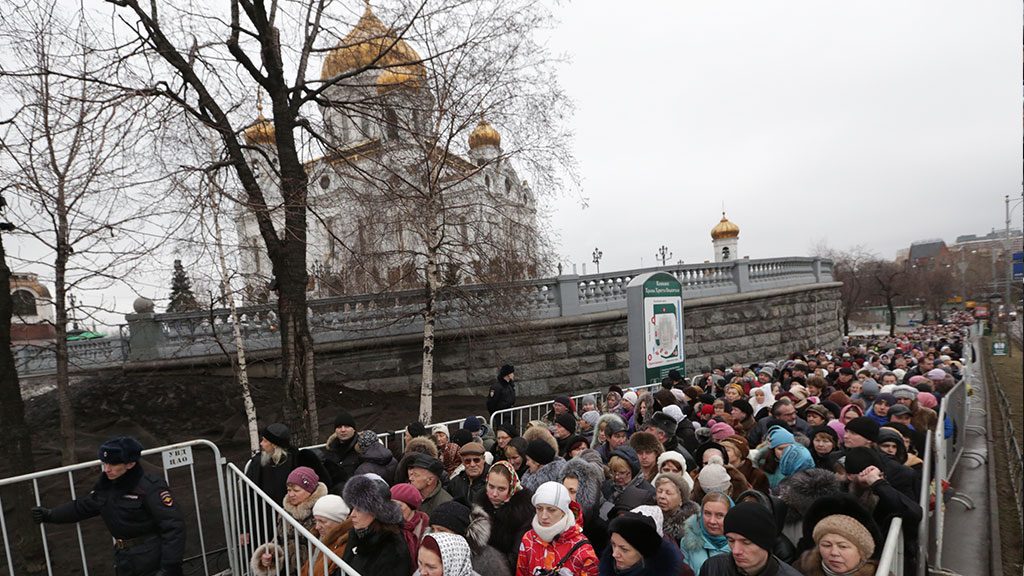
2014
The example of the relics was used as the most striking example of the inadequacy in event-organizing. The relics were brought to Moscow in 2011 and 2014 years but time passes by and nothing changes. Some may, of course, say that “there is a queue to the new iPhone in America every year!” but, first of all, we don’t live in America, and second, Western countries didn’t have such a painful experience of “living in a queue” and their queues are perceived as a peculiar attraction for the local tech geeks (like “I didn’t use the phone for a day”) and not as a humiliation and a sign of an awful organization of the event.
When a human and his comfort, health, mood and time will become the head of everything in Russia and other former Soviet countries, only then these kilometer-long queues will disappear, which look especially crazy in this age of high tech. And the organizers themselves will benefit from the creation of comfortable conditions for the people — a satisfied customer will always recommend a good service and will come next time with his family and friends. Why not aim for that?



























Comments